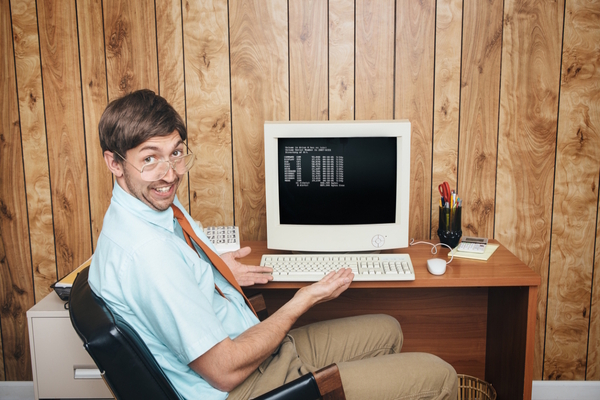American View: Why human risk is more focused on understanding than just teaching
Belief is weird. Given how little most people understand about how they reason, it’s amazing that people can come to reasonable conclusions at all.

Belief is weird. Given how little most people understand about how they reason, it’s amazing that people can come to reasonable conclusions at all. Belief and decision making are significant areas of study for those of us in the Security Human Risk field, as we’re always trying to understand how and why our users choose to passively ignore or actively violate required security controls. Our function is to figure out how to correct such behaviour, however getting to the causal factors driving bad behaviour is significantly hampered because when we ask people why did you just do that, they’re almost always rationalising an excuse, not explaining what truly motivated them. It’s vexing.
This came to mind after dinner Sunday night. My wife and I had invited our oldest and his significant other over for a takeout curry and planned to ask how their search for a home was progressing. I gave up my usual spot on the couch so the two young adults could sit together. That change of unconscious habits is likely the only reason I noticed a dust-covered DVD case on a shelf across the room from me: a 15-year-old instructional video on the “Bodyblade” brand of fitness equipment. I only recognized it because of the unique typeface on the spine of the case, but seeing the unopened DVD case brought back memories … and more than a few regrets.
We hadn’t purchased either this DVD or the set of “contraction blades” that it came with. They’d arrived in the mail without any warning. We learned a few weeks later that the package had been a gift from my father. He hadn’t warned us it was coming or explained why he’d purchased it. It just … showed up.
For context, my father was a fitness nut for most of his life. He’d started working out regularly in junior high school when his teachers discovered his natural talent for sports – baseball and basketball in particular. After his stint in the U.S. Army, my father made jogging the primary activity in his daily fitness routine. While I was growing up, my father rarely ever went more than two days without a run. All the way through his seventies my father averaged fifty kilometres a week, rain or shine, summer or winter. Everyone in our housing development knew “Mister Bill” on sight, since he was the only fellow jogging shirtless on long trots around the neighbourhood day after day.

My father tried everything he could think of to get me into the same habit and it didn’t take. I never found running to be a pleasant experience. Even after I’d joined the Army myself, jogging was only ever a necessary chore: something painful that had to be endured, not a source of joy and fulfilment like it seemed to be for dad. He was always disappointed with me that I’d fallen short of his expectations and example, both in loathing running and being utterly crap at sports.
We did partially bond over martial arts for a while. My father joined my dojo five years or so after I’d started there and he had himself a fabulous time. Still, we couldn’t come to terms over some of the foundational beliefs of the dojo: my father believed in qi, where I found the idea of a mystic invisible “life force” to be pseudoscientific poppycock. We argued about the validity of the concept by the side of the road on the last trip we took together. He couldn’t believe that I was rejecting my lived experience. I retorted that my lived experience had never provided one iota of “evidence” to support the notion that such a thing exists. We never reconciled our opposed beliefs on the topic.
After I moved out we each went our own way. My father retired from teaching and went on to found a hugely successful physical therapy regimen based on well-trodden neurological science. I went back to the military. We both continued to jog on the regular; my father joyfully running 3-7 days a week and me stumbling along 3-4 days a week in seething misery. This came up occasionally when I’d visit my parents during holiday breaks: I’d take an occasional run to maintain my military fitness goals, but we rarely ran together. Our paces were incompatible, and he was always more comfortable running alone.
We would, though, talk over coffee about the long list of injuries I’d racked up in the service: clapped out knees, smashed feet, wrenched back, hernias, broken bones, et al. I know my father was sad to hear about his oldest breaking down like an overworked mule. He’d only done three years in his enlistment, all while he was in the prime of his life. He had no personal frame of reference for how awful it felt to soldier on in your 30s and 40s. He did empathise, though.

Looking back, I’m convinced that was why he bought me the Bodyblade starter set. I only read the manufacturer’s explanation of how their product was intended to work this last Sunday night, after I found the old DVD. For fifteen years, I’d assumed the springy sticks were just another form of pseudoscientific “woo” nonsense that my father had believed in for most of his adult life. Turns out I was wrong. Per the rehabilitation page on Bobyblade.com:
“As a rehabilitation professional, our goal is to provide a safe environment to improve the way our patients move in a tri-plane environment. The elements contributing to this process are: Stabilization/Mobility, Strength, Endurance, Power, and Balance/Coordination. The compilation of these elements brings us to our ultimate result – Function. Rehabilitation is the process we perform that brings about function without causing harm in the process”
Looking back, it now makes perfect sense why my father thought this Bodyblade set was a good and meaningful gift. He knew how wrecked I was (and still am) and must have thought that that a targeted, low-impact, rehabilitation program would be a useful and safe way for me to regain some physiological function. He never said that to me, though … He never explained his reasoning. Just sent us the box out of the blue.
In the same vein, I made an awful mistake when the weird package arrived by allowing a combination of the framing effect and reactance to fabricate my interpretation of the gift’s meaning:: it “must” have been an artefact of another one of my father’s “woo” beliefs. That is, something mystical and not scientific. Secondly, I instinctively rejected having anything to do with it since if felt like another one of my father’s attempts to change who I was and how I lived (through exercise) to be more like him. These two faulty conclusions caused me to reject the entire package … so I never took the instructional DVD out of its packaging … the one thing that would have provided me with the context I needed to understand what this was and why my father had sent it to me.

Sigh.
Belief is weird. We all do stupid and self-destructive things for contrived and obviously wrong reasons. It’s a factory default setting for the human experience, We rationalise away our thoroughly scrambled thought processes post facto to protect our precious self-image even as doing so causes us – and, often, the people around us – increased risk and harm. We make mistakes, justify our poor decisions without understanding them, then reflexively resist sincere efforts to set us straight.
No wonder, then, that the technologists in the security profession often find our human-centric specialisation in Human Risk Management to be repugnantly arcane.
Tech kit reliably does what its told, while human operators notoriously stubbornly refuse to operate sensibly or predictably. That said, seeing people’s inherent irrationality as a curious puzzle rather than a defect or the product of malicious intent is the first critical step towards understanding. Without understanding people’s reasoning, it’s nearly impossible to motivate change.
I realise our field can be exasperating. Still, there’s no other profession that I’d want over this one. The more I learn about how humans think, the more ways I find to help other people avoid the sort of foolish mistakes I’ve made in my own life.

Keil Hubert
Most Viewed
Winston House, 3rd Floor, Units 306-309, 2-4 Dollis Park, London, N3 1HF
23-29 Hendon Lane, London, N3 1RT
020 8349 4363
© 2025, Lyonsdown Limited. Business Reporter® is a registered trademark of Lyonsdown Ltd. VAT registration number: 830519543





